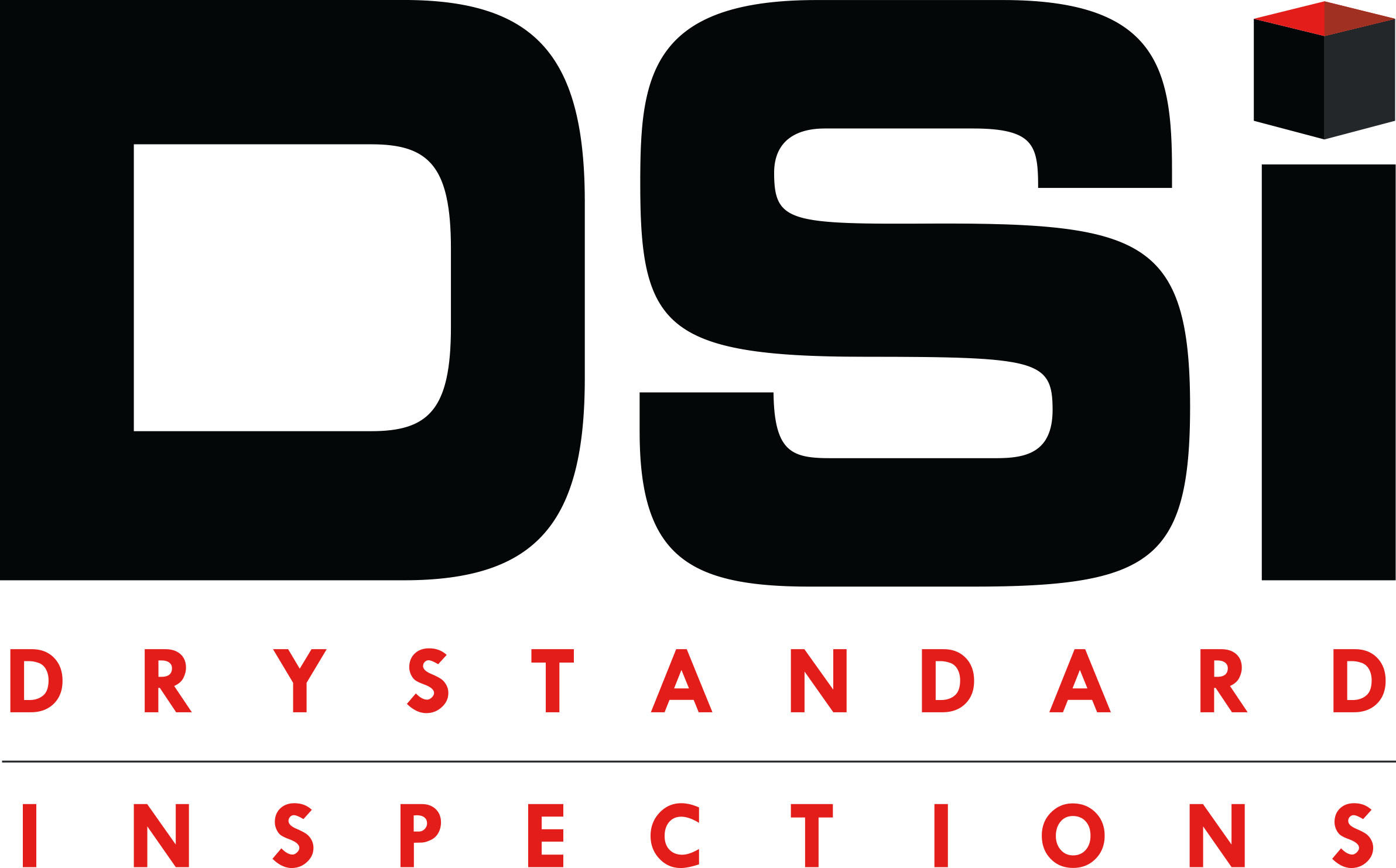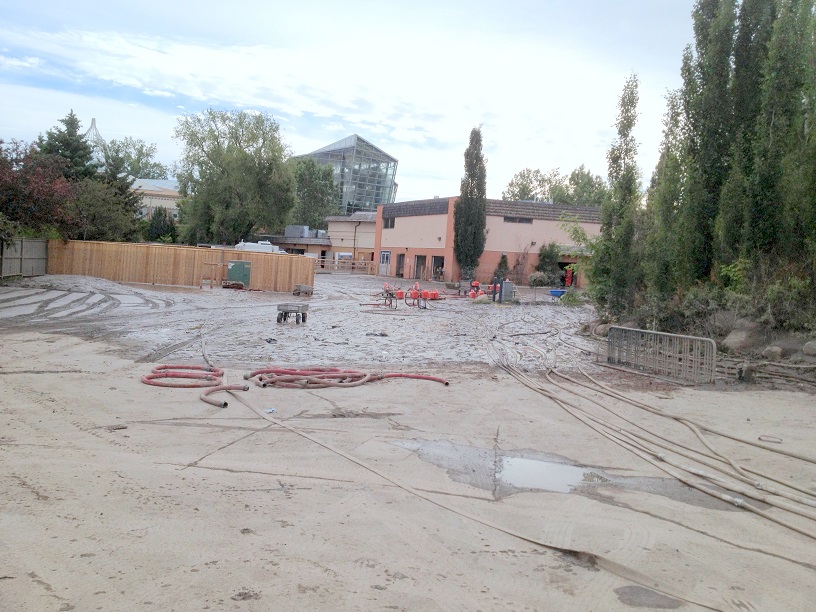Calgary Zoo 2013
Project profile of an IDSO Consulting Services managed drying plan and drying documentation.
Called a “500 Year Flood”, the city of Calgary, Alberta Canada and outlying areas suffered from catastrophic flooding that carried silt and drainage contaminants into the built environment. An obviously cherished city landmark is the Calgary Zoo with its dozens of beautifully designed buildings and acres of sculptured landscape.
Ranked among North America’s top ten zoos and boasting 1,000 animals from about 275 species, the buildings on the property were severely damaged by the flooding. The life and health of all who would occupy the more than three dozen buildings ranging in size from 400 to more than 20,000 square feet with some ceiling heights in excess of 80 feet were potentially endangered. Once this risk was acknowledged by all involved, the restoration protocol became apparent: access and remove all absorbent materials and expose the breached structural cavities followed by a thorough washing and decontamination protocol prior to drying efforts. The very definition of “mitigation” is to manage risk.
Hundreds of temporary help workers were utilized to remove the absorbent materials and shovel the debris out of the buildings. Safety protocols were defined and strictly enforced upon all who worked on the property by qualified, third party health and safety officers; an earmark of a competently managed project.
It was quickly realized that the structures would not have any electrical power for many weeks and were therefore incapable of self-sustaining responsible atmospheric conditions. Sufficient temporary power was brought in necessary for each building to power responsible temporary atmospheric control devices.
Objectives
The humidity control and restoration strategy was segregated into three phases:
- Pre-Restorative Drying Stabilization Phase
- Restorative Drying Phase
- Post Restorative Drying Stabilization Phase

Slate tile removal is accomplished in short order with the correct tools.
It was important to acknowledge the difference in the objective of each phase. For this project, the first and third phase had the distinct objective of maintaining an atmospheric condition of less than 50% relative humidity so as to diminish the possibility of secondary damages that would inflate the monetary cost of the loss. Following the emergency controlled deconstruction and initial sanitizing of the structure, the second phase had the distinct objective of producing an adequate and responsible delta vapor pressure necessary to responsibly dry the remaining materials. This delta vapor pressure was predetermined prior to the execution of Phase Two, and became the drying plan against which the drying strategy was measured. By segregating these phases, the paying parties and third party auditors would understand that the equipment use was not strictly a “drying effort”. Their usage was dictated by an adherence to a predetermined plan. Equipment type and quantity was modified as each phase was executed.
While carpeted areas were quickly scheduled for carpet removal, the hardwood, VC tile, slate and ceramic tile required a careful consideration for salvage potential. It was determined early in the process that the contamination had become trapped below these flooring surfaces and therefore, they too were scheduled for removal. Powerful flooring removal devices were brought in to not only remove the mortar beds into which the tiles were set, but also the adhesives used in the carpet installation process. If the concrete slabs were not exposed, the drying efforts would have been severely impeded thus delaying the ability to replace the flooring materials. This process took the better part of about 10 to 14 days… and a lot of sweat from some very dedicated, hard workers.
Federally regulated materials like asbestos and lead were found in several buildings. This complication required qualified individuals to be brought in to assist in the process.
Unique Challenges
Many of the buildings presented unique challenges for the restorative drying expert. Interior gardens of rare plants, structural embellishments of rare woods, classrooms with real animal biology training devices, heavens… even live, exotic animals were potentially exposed to the drying chambers! Drying experts regularly work with these nuances on a case by case basis and relish the challenge.
One such case was a favorite exhibit of many who visit the Calgary Zoo:

The Butterfly Room
A lush garden and center pond comes to life with dozens of rare, intensely colorful and flamboyant butterflies that inspire visitors with a sense of awe and serenity. The slate tile floor was removed and the concrete slab required drying prior to tile replacement. However, the room possessed a normal relative humidity of between 60% and 80%. The butterflies and the plants could not be relocated, so the concrete slab needed to be isolated from the ambient conditions with a tenting process.
While it is easy enough to inflate a tent in the room, it was necessary to evacuate the air from under the tent so that it wouldn’t seep into the butterfly’s atmosphere. This was accomplished by extending the tent to an open window on the opposite end through which the air could ventilate.
As it turned out, the butterflies only have a lifespan of a few weeks and perished naturally. However the efforts taken by the technicians to preserve the zoo’s living assets were vocally praised and appreciated.
Safari Building
Another structure included the use of timber imported from Africa. While this wood was not found in large quantities within the building, its function and beauty was an important element of the building’s superstructure.
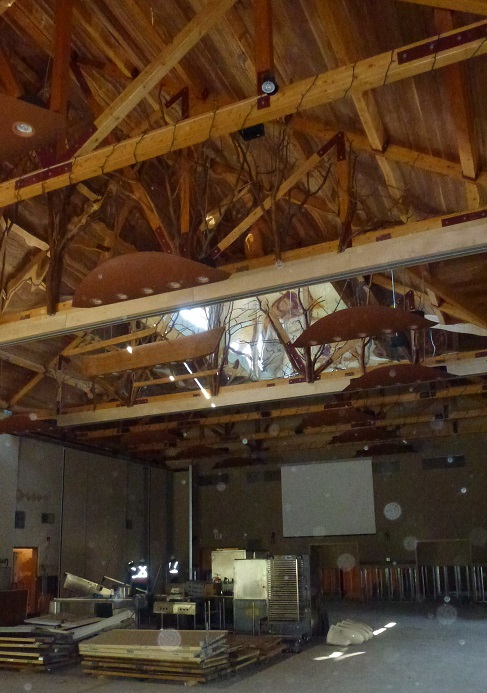
Exposed roof trusses were made of large African wood beams assembled with strong gussets plates. The rich tone of the wood is effectively reminds the visitor of the African safari. These beams were embellished with a Plexiglas type mirror that reflected and emphasized their presence. Phase Two (drying phase) is the intentionally engineered creation of a low atmospheric vapor pressure in conjunction with the wet materials being responsibly warmed.
An obvious focus was placed upon the efforts to dry the concrete slab upon which the building was erected and wood / tile flooring materials were placed. The African trusses would surely be affected by the dry atmospheric conditions – but that didn’t seem to be too much of a concern. After all, they’re from Africa – and it is pretty dry there!
On the seventh day of Phase Two (the drying phase), it was reported that “the mirrors were falling from the roof trusses”. Yikes!
The area was quarantined until the cause could be determined. Speculations surrounding the temperatures in the building causing a failure in the mirror adhesives or even melting the Plexiglas type mirrors were alleged. However, the thermal conditions in the building never rose to temperatures that could support such assertions. At no time did the temperatures exceed 91°F with the desiccant dehumidifiers being used. But the environmental conditions indeed possessed and incredibly low vapor pressure and thus a very low relative humidity.
The cause of the mirror breakage became apparent when we referenced the US Department of Forestry’s wood equilibrium moisture content table. The anticipated “normal wood EMC” in the building was approximately 7% to 8%. The drying strategy we employed produced an atmospheric condition that would produce a wood moisture content of 2% or 3%.
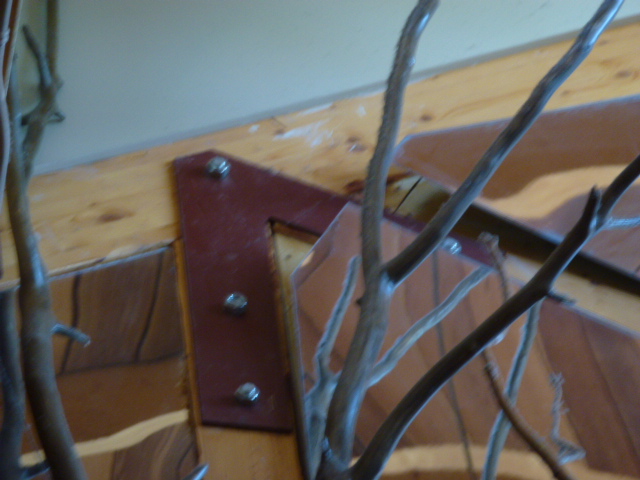
We all know that timber will change dimensionally (shrink) when its moisture content diminishes below approximately 30% MC. Indeed, we were shrinking the wood trusses causing the mirrors to no longer “fit” into the truss framework. Snap!
The Plexiglas product was not a high ticket item and they were verified to be adequately fastened to the trusses. The risk was documented and abated and the last few days of drying were completed. However, we were firmly nudged with the reminder that our drying strategies can produce surprising consequences for which we shall be held accountable. We tend to “look down” when evaluating our drying processes, and every once in a while, we might get a surprising reminder that we are modifying all materials within the drying chamber.
Lesson learned!
Drying Documentation
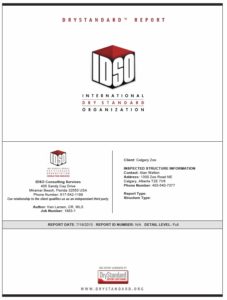
DryStandard Reports documented the process – and was heavily relied upon to validate the drying strategy. The restorer… was paid in full!
Drying records were another serious challenge necessary for the materially interested party’s confidence in the restoration company’s responsible control of the restoration process. DryStandard™ Report Software made short order of this task by collecting the thousands of daily readings collected throughout the process, embedding photographic support of the moisture meter readings into the report, extrapolating the delta vapor pressures produced on the project, summarizing the results into a simple executive summary that everyone could understand and communicating the results via daily emails. The production of comprehensive and clearly explained drying documentation was a key subject of praise and appreciation from both the insurer and customer representatives.
This was the kind of job that most restorative drying professionals relish. The unique challenges at the Calgary Zoo made every day both engaging and rewarding.
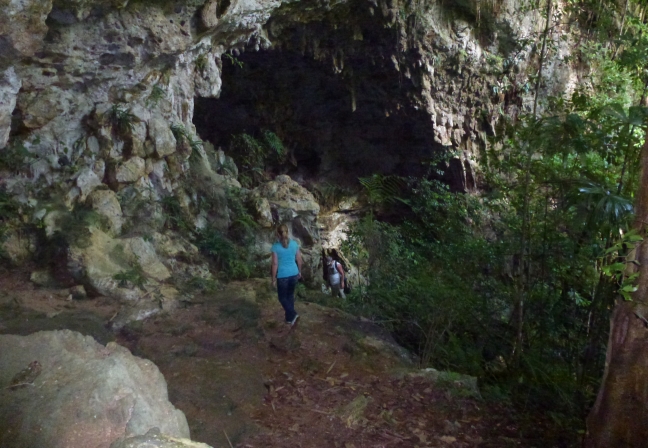
Are You A Community Resource?
Do you remember when you learned to ride a bicycle? Do you remember the anxiety you faced as you nervously climbed onto the bike for the first time, wondering if you would ever defy gravity and balance on those two wheels? As you practiced and became comfortable with the action, you eventually got to the point where you wouldn’t give it a second thought. You would hop on the bike and ride for miles, while pedestrians might only wish they had your resource and skill. It is likely that you eventually took that skill and bike for granted and never gave it another thought – even though the value of this speedy commute might be coveted by another.
It is possible that you are in a similar situation today. Restoration contractors possess a valuable body of knowledge that is highly desirable among those that need specialized preservation and repair. Once your education has been developed to the point of producing an individual with skilled talent, it’s easy to become content and fail to realize the value your asset. It would be such a shame if we would fail to publicize our ability and willingness to assist others when they need it most.
While most of us make our living providing this restoration service, there are opportunities when it is possible for us to contribute our knowledge toward worthwhile community causes. This kind of community involvement and contribution frequently results in surprising returns that are not always monetary.
You are part of a global community
I was recently contacted by Roy, a lifelong friend who moved to the country of Belize. This beautiful country is rich with Mayan history and artifacts. Roy has enthusiastically studied the history and explored the seemingly endless quantity of ancient Mayan sites that span several Central American countries. Along with other individuals, this passion inspired him to embrace the efforts to preserve what is considered to be an important part of our world heritage.
With a sense of urgency, Roy called me and described (in his usual colorful fashion), how some vandals had illegally accessed one of the world’s largest and most important Mayan cave systems and spray painted graffiti on its walls. Of course, Roy was seeking technical assistance – an asset that we restorers frequently take for granted, yet is desirable on a worldwide scale.
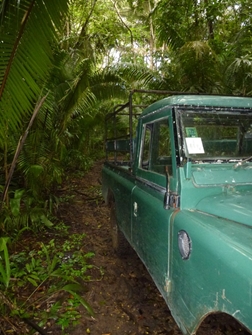
You can imagine my hesitation to volunteer any information that may be used in the restoration of such an important artifact. This became especially apparent as Ken Dart, the caretaker and manager of this property described to me the importance of preserving the ecology on the cave walls as well as a concern over the endangered ghost faced bat that may inhabit the cave system. Combine these concerns with the fact that this is deep in the jungles of Belize. This is not an area supplied with any power, nor is it accessible with machinery other than what can be carried in your back-pack. This is truly a challenging set of concerns for any conscientious restorer, and careful evaluation of the potential collateral damages produced by the restorer’s techniques should be intensely exercised.
The Reward:
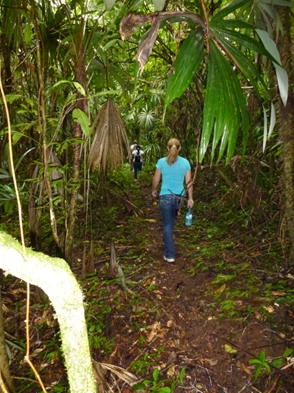
As expected, there failed to be a budget available for such contingencies – but Roy adequately explained the importance of the cause… and convinced me that Barbie and I were in dire need of a vacation in Belize. (payoff #1)
As part of that vacation, we were introduced to Ken Dart, a fascinating and passionate individual charged with the preservation of this non-commercialized property. After a lengthy discussion surrounding the restoration options worthy of consideration, along with the pros and cons of each protocol, a refined technique emerged. It was time to begin the adventure of traveling deep into the jungle to visit this Land Rover access only, heritage site. You know you are about to be part of something very special, when the even the veteran Land Rover struggles with the drive, and at times requires a machete to clear the roadway. (payoff #2)
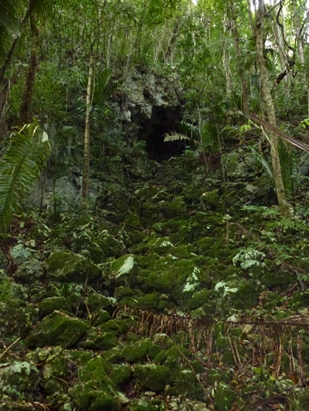
Upon arrival at the point where we must abandon the Land Rover and begin our hike through the jungle to the cave system, we are greeted with the terrifying growls of howler monkeys and screeches of parrots. These are foreign sounds and environment to say the least. Will the 85F, 95% relative humidity of the jungle have an unexpected effect on the restoration efforts? These perplexing questions persist.
When we arrive at the cave – Actun Son of Chapat, we are presented with the enormous and magnificent natural wonder used by the Maya for social and religious purposes. Thousands of ceramic pottery shards scatter the floor of the cave requiring a constant attention to your every step. And then we notice the mindless destruction caused by the vandals.
Following the predetermined testing protocols, a qualified professional carefully attempts the physical removal of the paint from the cave walls. After a few minutes – the conclusion is evident: the restoration process succeeds in the removal of the silver spray paint and apparently does not soak deeper into the limestone walls, while still preserving the lichens beneath the paint. Ken Dart is ecstatic. (payoff #3)
Now that the tests have been performed, the full efforts to remove the graffiti will wait for another day. For now – Barbie and I get a personal tour of some of the other caves in the area, with the showcase being the main cave system Actun Chapat. This cave system has not been fully explored yet – and travels for miles. A special tour of this non commercialized cave system produced an authentic adventure that will last Barbie and me for the rest of our lives. Thousands of Mayan artifacts and even the deceased Mayans themselves can be seen in ways you would only expect on National Geographic channel. What an experience. (payoff #4)
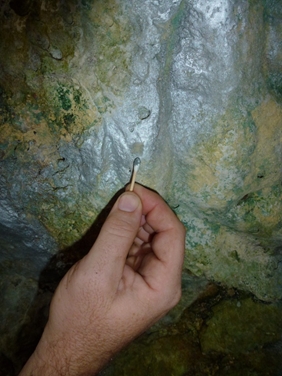
As Barbie and I traveled home, we reflected upon the experiences and memories gained during that week of vacation. While I may have felt that the value of my contribution toward the preservation of a recognized heritage site might have been somewhat exaggerated – the appreciation shown by the caretaker of the property clearly demonstrated the value of a qualified restoration professional’s knowledge and skill. What greater reward could there be than to know that you contributed toward the preservation of something that existed long before you were born, and will continue to exist for thousands of years after we are gone.
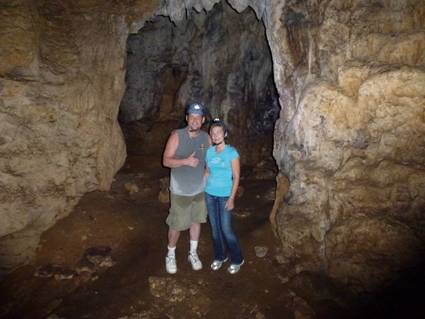
These are the kinds of things that can inspire a satisfying smile that is more meaningful than a “paycheck”. (payoff #5)
For those who would like more information about Actun Chapat and its preservation efforts, please contact Ken Dart at ken@belizeansun.com
